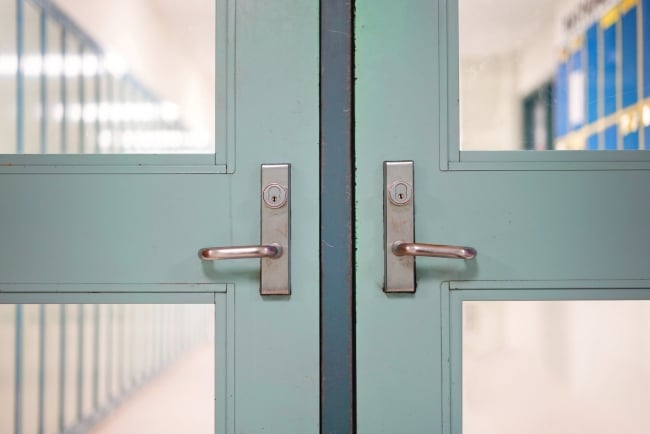You have /5 articles left.
Sign up for a free account or log in.

VisualArtStudio/iStock/Getty Images Plus
An alarming number of small colleges have recently closed, some with little warning to their communities. This trend will likely only be exacerbated by the impending demographic downturn. While there is no single answer as to why a particular institution met this fate, one characteristic the closed colleges share is that they are enrollment driven.
As such, the answers undoubtedly relate to the recruitment, admission and retention of students. For such institutions, the impact of one or more additional extenuating factors, such as the lingering effects of the pandemic or the ongoing Free Application for Federal Student Aid debacle, can be enough to push them over the edge into insolvency. As leaders wonder if their campus is vulnerable to closure, one thing is clear: institutions of higher education in the U.S. cannot afford to take their eyes off the ball of enrollment management and must begin planning now for what we know is coming in the next few years.
It’s debatable what defines a “vulnerable” institution. There are a few quantitative measures, such as diminishing enrollments, small endowments and/or significantly high levels of tuition dependency (meaning, the annual operating budget relies on tuition revenue for the vast majority of its funding). More qualitative definitions would include institutions where the location is not a “magnet” (e.g., a major U.S. city or an exceptionally bucolic rural campus), or an institution that is neither specialized nor boasts a distinctive mission or set of offerings.
As leaders of institutions that fit these characteristics witness one after another heartbreaking closure, inevitably a question arises: What’s to be done? More specifically, what are institutions not doing that could make them resilient to such headwinds? There are many ways to answer this question; here we will offer a few considerations. These observations are drawn from our experiences working with and within institutions that have faced significant enrollment challenges. In other words, these are real-world examples.
To begin, while institutional governing boards are often replete with successful businesspeople who possess high degrees of business acumen, this does not equate—as is regularly assumed by senior leaders and/or by the board members themselves—to deep knowledge of the higher education sector. For example, understanding that yielding a smaller incoming class will be a problem that sticks around for four years is a basic tenet of enrollment management, as is awareness of the (negative) financial and reputational impacts of low retention and graduation rates.
We could cite many more examples of enrollment problems with which the board may not be familiar, such as summer melt, or problems in the enrollment funnel in moving from suspect to prospect or from admitted student to deposited student, etc. Moreover, the timelines required to change outcomes in our sector are protracted, especially compared to the corporate world; changes to marketing, branding, name list buys, high school visits, campus tours and virtual tours, etc. will only begin to improve recruitment at least two years hence.
If board members are not fully apprised of the details pertinent to our business model, they may be all too ready to overlook the earliest signs of crisis, dismissing an off year as a “blip,” or resisting investments in long-term solutions to root problems. Worse, lack of understanding may lead boards to demand quick fixes. Immediate improvement is, however, simply not achievable in the ways it might be in other industries and such pressures can result in presidents and senior leaders wasting valuable and limited energy throwing good money after bad, rather than taking the time to assess the true problem and invest scant resources more wisely.
Another important issue relates to the unwillingness of leaders to evolve the institution to meet market demands. We have too often seen that storied, historic institutions have cultures that are change averse, and this seems to be particularly true in the liberal arts. This statement might appear to be controversial—but only if misunderstood.
To be clear, the humanities and the arts are vital, critical aspects of our institutions. But today’s prospective students are highly focused on career outcomes, given the financial investment they and their families are being asked to make. We believe that curricular offerings can place a high value on the core principles of the humanities and liberal arts while also preparing students for careers.
However, we find that many institutions provide little to no information to prospective students about actual outcomes for graduates. Examples include: What does applying to graduate school look like for graduates? Employment and earning potential? Average student loan debt? What do alumni say about their experience? What data do you have that is compelling to answer these and related questions? Families increasingly ask, “What is the ROI on this investment?”
Too often, institutional leaders react negatively to this question, seeing it as crass, or as focused on the wrong metrics—“you can’t put a dollar figure on the value of an education.” We find that many are unable or unwilling to directly address this question in their marketing and recruitment materials, but this is the most common query we hear from families. And we find that institutions that are unwilling to adapt their offerings and marketing to current demands are among those that face some of the deepest enrollment challenges.
So what is to be done? Unfortunately, there are no quick fixes for an institution that has reached a breaking point. Once enrollment has become so precarious, challenges compound one another—resources are thin, morale is low, retention (not only of students, but of staff and faculty) dwindles, lack of trust between faculty and administration abounds, and so on. Talk will begin about mergers, but few thriving institutions will even consider taking on the risk of incorporating one that is struggling (which is to say, the time to consider a merger is well before the crisis point). And new curricular programs, as we all know, take years to implement.
However, the good news is that for those institutions that are not yet at this place, there are definitely viable strategies to avert the fate of closure. Centrally, senior leadership must educate the governing board about the financial model of higher education and provide regular state-of-the-institution updates on the enrollment picture (i.e., biennially if not quarterly). These updates should be delivered to all internal constituents—faculty and staff—as well.
In addition to “point-in-time” analyses, it’s critical to forecast what the prospect and applicant pools look like for the next three years, at least. Further, it’s important to be honest and transparent when issues arise and foster a culture wherein addressing problems early is the norm, when course corrections are still possible. Sweeping problems under the rug, sometimes done in an effort to minimize negative press or to maintain a positive view of current leadership, hurts far more than it helps.
By contrast, curricular innovation, alterations to long-held marketing practices, openness to self-reflection regarding out-of-date programs, practices and policies—in short, a willingness to change and adapt—are all key. Finally, vital and successful institutions develop long-term strategic enrollment plans that are tactical, realistic and assessable and for which there is clarity about accountability. Putting these practices in place now can avert catastrophe down the road.








